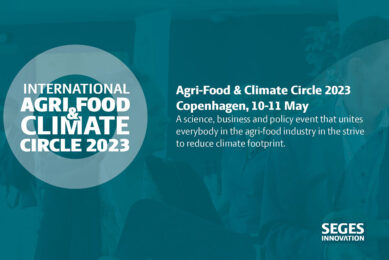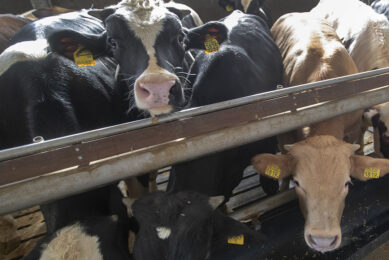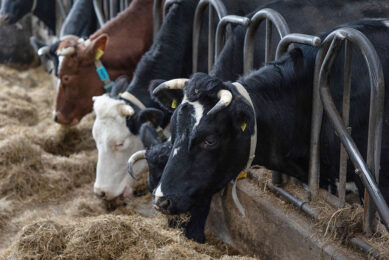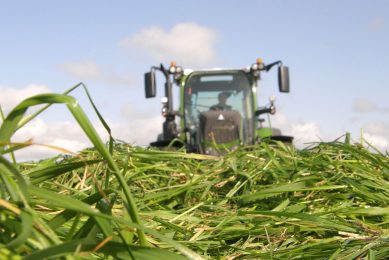INNOVATION: Omega 3 tools to control methane emission
The company Valorex is making lots of buzz about methane reduction at the Space livestock show, which is currently held in Rennes, France.
Different methods are available to cut down methane emission from ruminants. One of these methods include the supplementation of flaxseed high in omega 3 fatty acids. These fatty acids decrease the saturated fatty acid content in the milk. By decreasing the saturated fatty acids the methane emission is also reduced.
Valorex- known for its linseed extrusion products from which they obtain the valuable omega 3’s- has developed a new way to reduce the methane by cows. By using a quick analysis (few hours) the milk fatty acids can be measured. A calculation tool is then applied to calculate the amount of methane that is produced by the animals. Milk fatty acids have a strong connection with the methane output as they are using the same metabolic pathways.
A second step in the program is then the use of Green Dairy MTD, a diet formulation tool to optimize (balance) the diet to minimize the methane emission. This software tool can be used by nutritionists and automatically chooses the raw materials and amount of flaxseed that has the least methane production and produces the most liters of milk. When diet has changed the milk can again be measured to see if any changes appear in the milk fatty acid content and thus the methane emission.
Greener cow project
One of the success stories of this methane tool is Stonyfield farm in the US. Stonyfield has launched the Greener cow project to decrease global warming gases from cow digestion, while improving the nutritional value of the milk. Enteric emissions, the “burps” released from the natural digestion process of cattle and other ruminants, are responsible for 5-10% of human induced greenhouse gas emissions.
The program uses the Valorex tools and is feeding the cows a diet high in natural omega-3 sources, such as alfalfa, flax, hemp and of course grasses, which naturally re-balance the milk fatty acids, resulting in an increase in the important omega-3 content and decrease in saturated fats. The omega-3 rich feed rebalances the cow’s rumen to reduce the waste by-product methane.
Stonyfield Farm has been able to reduce the enteric emissions from the cows by as much as 18% (average of 12%), while naturally increasing the omega-3s in the milk by 29% without adding anything, such as fish oil, to the milk.
Join 26,000+ subscribers
Subscribe to our newsletter to stay updated about all the need-to-know content in the feed sector, three times a week. Beheer
Beheer









 WP Admin
WP Admin  Bewerk bericht
Bewerk bericht